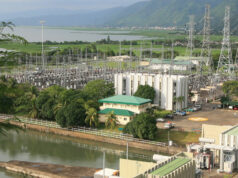Policy uncertainty offsets mineral potential to weigh on Philippines’ attractiveness to miners
THE PHILIPPINES has continued to languish near the bottom of an annual survey of mining jurisdictions by Canada-based think-tank Fraser Institute as a negative policy environment is about to mark its seventh year, although Fitch Solutions said in a separate note that it expects an easing of industry restrictions to lead to a slight recovery of nickel — of which the country is a leading global source — starting this year.
Fraser Institute’s Survey of Mining Companies 2018 released on Friday presented its latest Investment Attractiveness Index, which consists of the Policy Perception Index (PPI) and the Best Practices Mineral Potential Index. The PPI measures effects of government policy on attitudes toward exploration investment, while the Best Practices Mineral Potential Index rates jurisdictions based on their geologic attractiveness.
“While it is useful to measure the attractiveness of a jurisdiction based on policy factors such as onerous regulations, taxation levels, the quality of infrastructure, and the other policy related questions that respondents answered, the Policy Perception Index alone does not recognize the fact that investment decisions are often sizeably based on the pure mineral potential of a jurisdiction,” the report explained.
“Indeed… respondents consistently indicate that while 40% of their investment decision is determined by policy factors, 60% is based on their assessment of a jurisdiction’s mineral potential.”
There were 291 responses from the 83 jurisdictions coverd by the survey, which was sent electronically to about 2,600 individuals between Aug. 21 and Nov. 9 last year.
Each jurisdiction is assessed on 15 policy factors, with the one deemed posing the biggest barriers to investment receiving a score of 0 and the one offering the most attractive policies getting 100.
OVERALL ATTRACTIVENESS
Under this framework, the Philippines has stayed at the bottom fifth of the Investment Attractiveness Index since 2017, or 65th out of 83 jurisdictions on the latest list from 75th/91, with its score improving slightly to 55.55 from 50.32.
The country did slightly better in previous surveys, placing 66th/104 in 2016 and 72nd/109 in 2015, with scores improving to 58.97 from 56.59.
In 2014, the Philippines got a much-lower 48.78 grade in 2014, putting it 95th out of 122 jurisdictions that year.
The country was the lowest ranking in Australia and Oceania, which was topped by Western Australia that was followed by Queensland, Fiji, Australia’s Northern Territory, South Australia, New Zealand, Papua New Guinea, New South Wales, Indonesia, Victoria and Tasmania.
Topping the overall global list was Nevada, USA, followed by Western Australia and Canadia’s Saskatchewan province in third place.
POLICY PERCEPTION
The Philippines received its lowest scores in terms of policy perception: 42.46 on the 2018 list from 38.29 in 2017, placing it 79th/83 from 85th/91 in those respective years.
It had scored 26.68 in 2016, 41.48 in 2015 and 33.46 in 2014, placing it 100th/104, 89th/109 and 113th/112 in those respective years.
BEST PRACTICES
The Philippines got its best marks in the Best Practices Mineral Potential Index at 64.29 on the 2018 list from 58.33 in 2017, pushing up its rank to 37th/83 from 49th/91 in those respective years.
The years 2014-2016 saw the country’s score improving from 58.33 to 66.67 to 79.17 in those respective years, resulting in ranks of 65th/122, 35th/109 and 65th/122.
POLICY UNCERTAINTY
The Philippines’ mining industry have been reeling from an unfriendly policy environment since 2012, when former president Benigno S.C. Aquino III signed Executive Order 79 which slapped a moratorium on new permits until a new law is enacted giving the government a bigger share in miners’ revenues.
A bill that sought to do so was filed near the end of the Aquino administration but it did not gain ground in the House of Representatives, from which all tax measures are supposed to start by law.
President Rodrigo R. Duterte continued this approach from day one of his administration in mid-2016, airing his personal opposition to the mining industry on environmental grounds but admitting the law allowed miners to operate under certain conditions.
He immediately appointed environmentalist Regina Paz L. Lopez in June 2016 who cracked down on the country’s biggest miners by ordering the suspension of operations of many of them in early 2017.
The Commission on Appointments rejected her appointment in May the following year, however, leading to the appointment of a successor who has been more accepted by industry: retired armed forces chief-of-staff Roy A. Cimatu.
But while a number of metal miners have been allowed to resume operations under his watch, Ms. Lopez’s ban on open-pit mining — an otherwise widely used method — remains.
BIGGER SHARE WANTED
The House under the 17th Congress that ends on June 7 approved on third and final reading on Nov. 12 last year a bill increasing the government’s share in mining revenues.
House Bill No. 8400, or “An Act Establishing the Fiscal Regime for the Mining Industry,” proposed to reduce the royalty on large-scale mining within mineral reserves to three percent of gross output from five percent currently, and introduce a 1-5% margin-based royalty on miners operating outside mineral reserves.
The royalty will be imposed on top of other taxes, such as the corporate income tax, excise tax which the Tax Reforms Acceleration and Inclusion (TRAIN) law doubled to four percent, the royalty to Indigenous People and local business tax, among others.
The same bill will also impose 1-10% margin-based windfall profits tax on income before corporate income tax and contains a provision dissuading contractors from excessive debt funding by disallowing deduction of interest expense once a company records a 3:1 debt-to-equity ratio.
Its counterpart measure — Senate Bill No. 1979, authored by Senate President Vicente C. Sotto III — that has yet to be approved at the committee level will impose a five percent royalty based on gross output on both large-scale or small-scale miners in mineral reserves; and an initial three percent royalty based on gross output on mining outside mineral reserves for the first three years of implementation, increasing to four percent in the fourth year and to five percent in the fifth year.
MOVING WITHIN CONSTRAINTS
The Mines and Geosciences Bureau (MGB) of the Department of Environment and Natural Resources (DENR) said it hopes to add mining sites in the country to increase the sector’s contribution to national economic growth.
“MGB is not contented. We wanted to increase the mining industry’s contribution to the economy measured by gross domestic product (GDP) percentage from the current 0.7% to 4-5%. This can be done by opening four new major mines as soon as possible and the data from small scale mining are captured,” Wilfredo G. Moncano, MGB director, told BusinessWorld in a mobile phone message when sought for comment.
“MGB has recommended to the Mining Industry Coordinating Council (MICC) co-chaired by [Finance] Secretary [Carlos G.] Dominguez (III) and [DENR] Secretary [Roy A.] Cimatu the lifting of the moratorium on the processing of Mineral Production Sharing Agreement (MPSA) applications so that we can have new mines opened and operating. However, we may have to wait until a new fiscal regime other than the doubling of taxes is passed by Congress…”
For the Chamber of Mines of the Philippines (CoMP), “The Philippines’ consistently low ranking over the years in the Fraser Institute’s annual survey on, among other things, policy perception and overall investment attractiveness only mirrors reality.”
“The uncertainty in mining regulations — particularly the ongoing ban on open pit mining and the moratorium on new mining projects — has been discouraging capital inflow in the mining sector here. Both the ban and the moratorium should be lifted so that pending mining projects can help boost the economy and fund government projects, such as in the areas of infrastructure, health, and education,” Rocky G. Dimaculangan, CoMP’s vice-president for Communications, said in an e-mail.
“Three of these pending projects — the Tampakan Copper Project, Kingking Copper-Gold Project, and the Silangan Copper-Gold Project — can bring the industry’s exports to over nine percent of total Philippine exports and increase the industry’s contribution to about 1.4% of the country’s GDP,” Mr. Dimaculangan said.
“In 2017, mining accounted for 6.4% of exports and 0.8 percent of GDP. These three projects combined are expected to bring in $4.7 billion in capital investments and provide revenues of P303 billion for the national government, on top of P40 billion for local government units over the life of the projects,” he added.
“Open-pit mining is a safe, globally accepted mining method whose environmental impact can be mitigated and reversed through modern technology. The continued ban on this method is tantamount to turning our back on the industry and the benefits huge mining projects could provide rural host communities and our nation… No other country has turned its back on the development of its mineral wealth.”
In an earlier interview, DENR Undersecretary Jonas R. Leones said: “The ban still exists. The order issued by former Secretary Gina Lopez is still in effect.”
“We are still studying possible options to open-pit mining. As of now, the acceptable method in extracting minerals like gold is through open-pit mining. But while we are conducting study on possible options to replace open-pit mining, we have already required all mining companies to do progressive rehabilitation,” Mr. Leones added.
“We will not be allowing them to expand their operation unless they rehabilitate those reserved areas.”
NICKEL OUTPUT EXPECTED TO RECOVER
Fitch Solutions said in a Feb. 28 note, however, that a recovery of Philippine nickel production will help boost global output this year.
“Global nickel production is expected to remain strong in 2019, driven by ongoing supply recovery in Indonesia and a return to… production growth in the Philippines, despite subdued performance in major markets, including Canada, Australia and Russia,” the note read.
“We expect output in the number-one global producer, the Philippines, to begin to rise in 2019 as some of the currently suspended mines become operational,” it explained.
World nickel production is expected to grow by an annual average rate of 3.5% over 2018-2027, slightly slower than 2008-2017’s 3.7% average rate.
Estimating that Philippine nickel production dropped by an average of 22.7% from 2016 to 2018 “as a result of the banning/suspension of open-pit mining on environmental grounds”, Fitch Solutions projects output to grow 1.7% annually over 2019-2028. — Reicelene Joy N. Ignacio with Charmaine A. Tadalan



